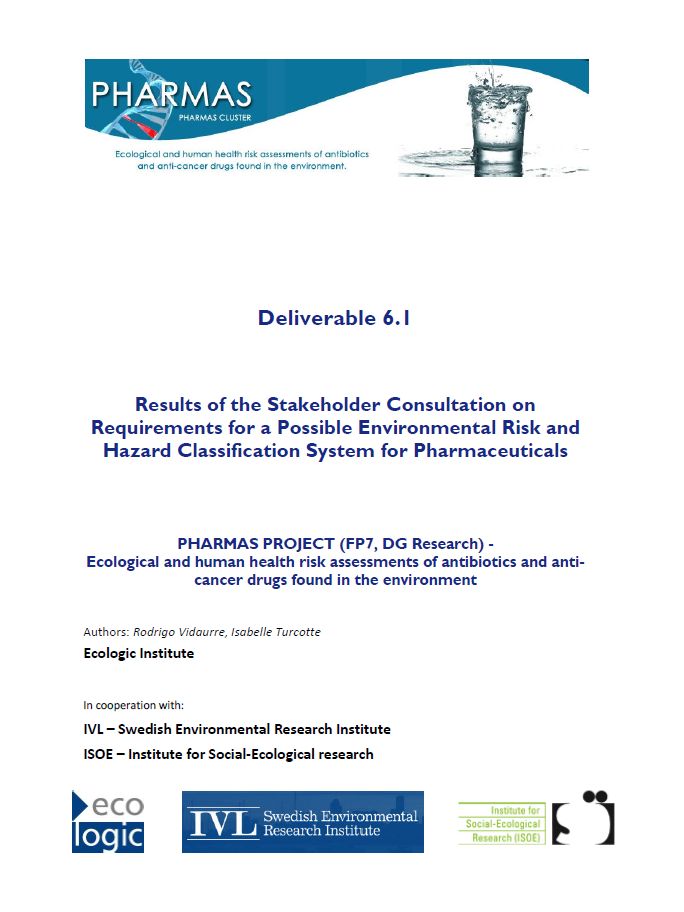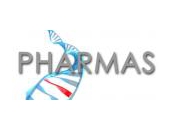Pharmaceuticals in the Environment - Science-Policy Event
- Event
- Date
-
- Location
- Brussels, Belgium
The PHARMAS project organized a Science-Policy Event in Brussels on Pharmaceuticals in the Environment. Several European, national, and international projects presented their results – from the perspective of their relevance to environmental policy – to interested stakeholders. All presentation slides, summaries, and statements are available for download.
As part of the FP7 project PHARMAS, Ecologic Institute organized an event for scientists and policy-relevant actors on the topic of pharmaceuticals in the environment. The event [pdf, 760 kB, English] took place on 21 November 2013 in Brussels, on the premises of the Directorate-General for Research and Innovation of the EU. Rodrigo Vidaurre of Ecologic Institute welcomed representatives of national and EU authorities, environmental organisations, research, water management and the pharmaceutical industry, working on the so-called "emerging pollutants."
PHARMAS: state of science on risk understanding and management
In the event's first block, the audience was presented with the current state of science on risk understanding and management of a number of individual pharmaceuticals. Ad Ragas (Radboud University Nijmegen) gave a presentation on the results of the PHARMAS project, which focuses on antibiotics and anticancer drugs. PHARMAS examined, among other things, whether the consumption of drugs and their residues in the aquatic environment resulted in risks to human health and the environment. Based on consumption data and information about the environmental characteristics of the substances, the concentrations of pharmaceuticals in the aquatic environment were modeled and maps of accumulated risk for aquatic ecosystems and humans created. Ad Ragas concluded that currently there is no scientific evidence that the modeled concentrations of antibiotics and anti-cancer drugs occurring in the environment pose health risks for humans. Model predictions indicate however that some human medicines reach concentrations that could cause environmental effects. A brief summary and the slides of the presentation [pdf, 2.3 MB, English] can be downloaded here.
CYTOTHREAT: focus on anti-cancer drugs
In the following presentation Metka Filipic (National Institute of Biology, Slovenia) presented the preliminary results of the FP7 project CYTOTHREAT, dedicated exclusively to anti-cancer drugs. The project aims to determine the occurrence and behaviour of selected cytotoxic agents, singly and in mixtures, in sewage treatment plants and the environment. Among other things, it developed a special multi-residual analytical method for the determination of the selected anti-cancer agents at very low concentrations, and identified a number of previously unknown transformation products of those. Four of the analyzed drugs were selected to carry out ecological studies on three trophic levels. The summary and slides of the presentation [pdf, 1.6 MB, English] can be downloaded here.
noPills: working to reduce the input of pharmaceuticals
The event’s second block presented the audience with measures and policy responses. Sven Lyko (Emschergenossenschaft/Lippeverband) presented the Interreg IV B project noPills, which aims to achieve a reduction of pharmaceutical entry on the water catchment level. All stakeholders in the catchment area are being informed about the consequences of their behaviour and recommendations for action, while new methods for reducing unavoidable entries of pharmaceuticals in waste water are tested. Summary and slides of the presentation [pdf, 4.8 MB, English] can be downloaded here.
Studying the global relevance of pharmaceuticals in the environment
Frank-Andreas Weber (IWW) then informed the audience about a study for the Federal Environment Agency (UBA) of Germany, which aims to define the current state of knowledge on the global relevance of pharmaceuticals in the environment. For this study, scientific publications with analytical findings on pharmaceuticals in the environment from all continents are analysed and summarised in a database. A preliminary result is that pharmaceuticals occur on all continents in environmentally relevant concentrations. Summary and slides of the presentation [pdf, 1.5 MB, English] can be downloaded here.
Greening procurement: environmental impacts of the health sector
In the last presentation of the second block Ake Wennmalm (Sustainpharma) spoke on a project of the World Health Organization (WHO), which aims to reduce environmental impacts of the health sector by influencing procurement and production of pharmaceuticals. Amongst other factors, ecotoxicological data will be considered when deciding on public procurement of pharmaceuticals, as is already the case in the Swedish system. Summary and slides of the presentation [pdf, 225 kB, English] can be downloaded here.
Subsequently to the presentations, representatives of a pharmaceutical company, the EU Commission, an environmental organization and a European umbrella organization for water developed statements of their respective organizations towards the future approach towards pharmaceutical pollution. The statements [pdf, 400 kB, English] can be downloaded here.





